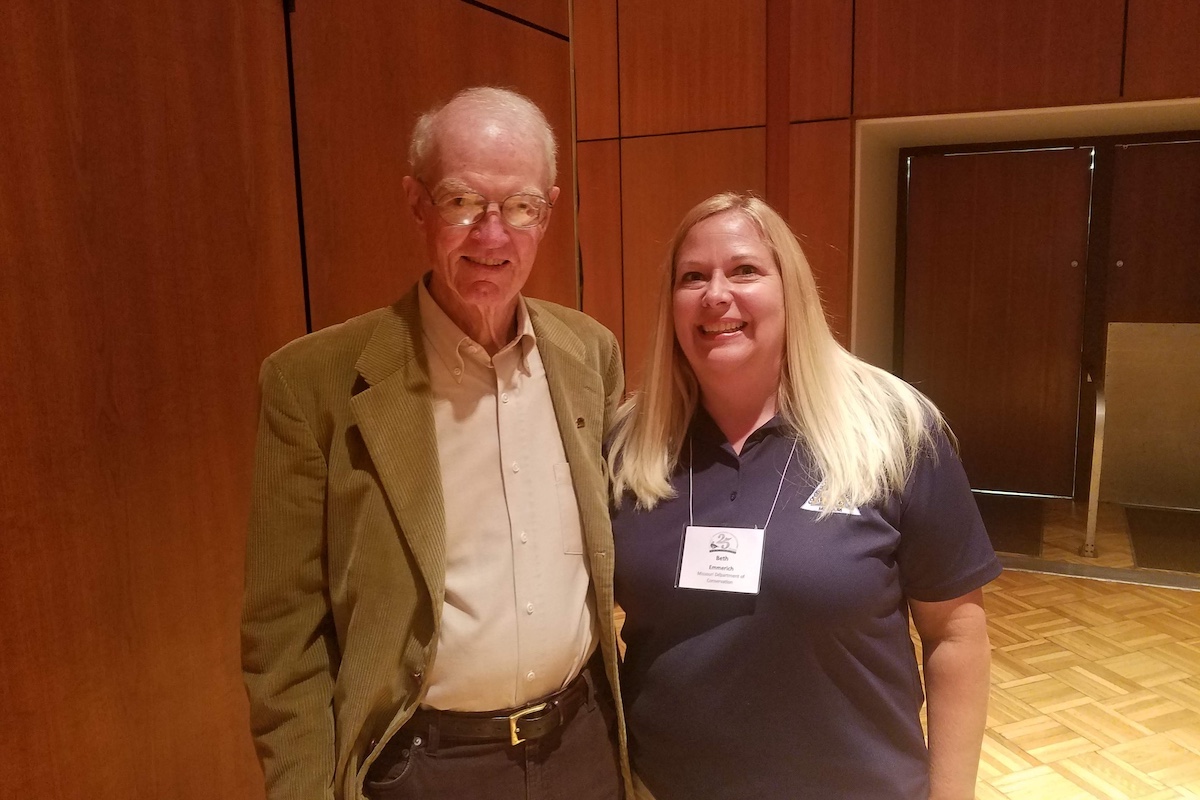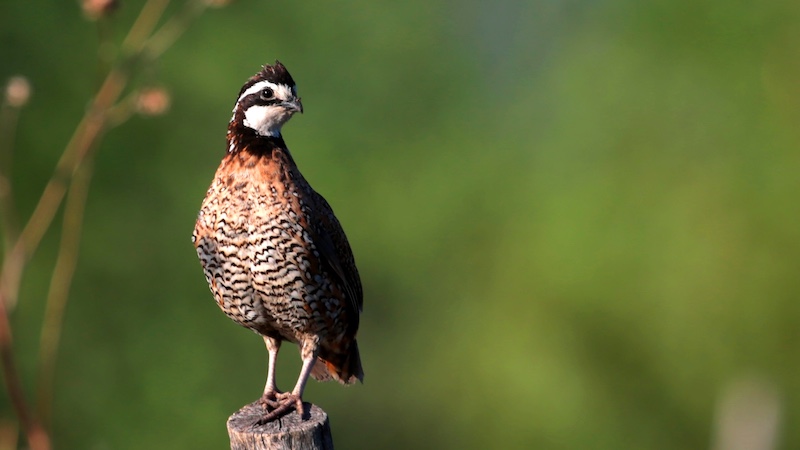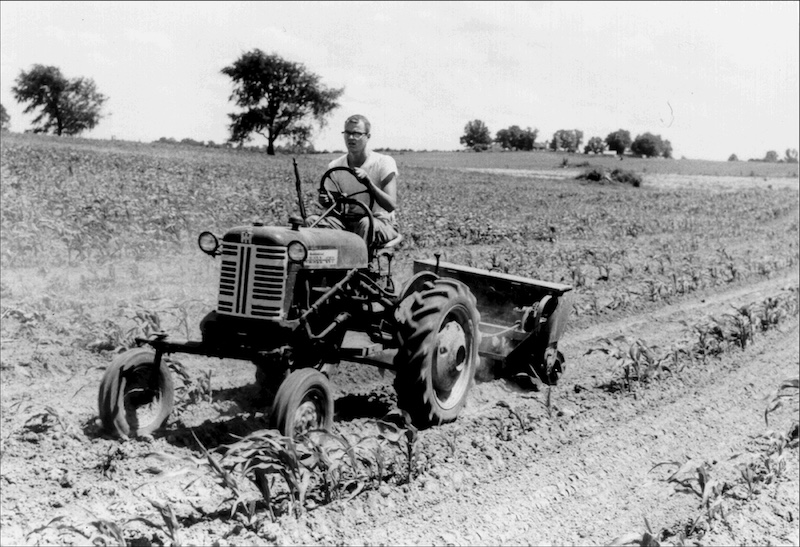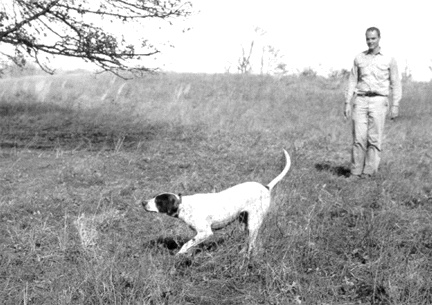
Photo courtesy of Southern Illinois University Cooperative Wildlife Research Laboratory.



Photo courtesy of Southern Illinois University Cooperative Wildlife Research Laboratory.
If you have serious interest in managing bobwhite quail in Illinois, then you have heard of John L. Roseberry. If you were lucky, you had the privilege of knowing or working with him. Our current understanding of bobwhite ecology and insights on how landowners can improve habitat conditions and increase populations of this gamebird are due in large part to Roseberry’s dedicated research at the Cooperative Wildlife Research Laboratory (now called the Center for Wildlife Sustainability Research) at Southern Illinois University. As a Senior Scientist at the Laboratory, Roseberry researched the bobwhite—and white-tailed deer—for 38 years. But perhaps his greatest contribution to wildlife science and management came from mentoring students, many of whom hold careers in wildlife management today.

John Roseberry passed away on June 14, 2025, at 88 years of age. Born in Springfield, he grew up in nearby Riverton and was an excellent student and athlete at Riverton High School. As a youth he spent free time hunting and fishing along the Sangamon River. After high school, Roseberry attended the University of Illinois, Urbana-Champaign where he received his bachelor’s degree. He then attended Southern Illinois University, Carbondale where completed his Master of Arts degree. After serving in the United States Army, he returned to southern Illinois and began working with Dr. Willard D. Klimstra.
Dr. Klimstra came to Southern Illinois University in 1950 at the invitation of President Delyte Morris to establish a unit within the Department of Zoology devoted to the study of wildlife in Illinois. The study of northern bobwhite ecology became a primary focus of the new Cooperative Wildlife Research Laboratory. Roseberry worked there as a research scientist for 38 years producing 38 peer-reviewed publications. These works have been cited in 1,250 research publications.

Much of the early work was conducted on the Carbondale Research Area, 1,450 acre tract of privately owned farmland about 6 miles northeast of Carbondale. Roseberry’s research followed the bobwhite throughout the year. These observations revealed bobwhite’s utilization of plant communities providing important inferences regarding their habitat requirements. Bobwhite abundance was also measured annually for 26 years. The research area was open for hunting and estimates of annual harvest were recorded, as was the sex and age of harvested birds.
Roseberry found that in the fall and winter, woody cover in proximity to food sources was of prime importance to quail survival. Foods utilized included corn, soybeans and weed seeds such as foxtail and ragweed. During the breeding season, bobwhites moved to more open areas and established nests in idle croplands, pastures, roadsides and other non-tillable lands. Nest searches provided detailed information regarding the location and vegetative composition of nests. In 1975, Dr. Klimstra and John Roseberry coauthored Nesting Ecology Of The Bobwhite In Southern Illinois, a monograph published by The Wildlife Society, that received national recognition. These studies established the basic building blocks of quail habitat management in midwestern landscapes.

In 1998, Roseberry coauthored a paper with Scott Sudkamp that evaluated habitat for bobwhite on a larger scale. Through analysis of GIS data and bobwhite census returns, they developed a generalized composition of Illinois bobwhite habitat, Assessing The Suitability Of Landscapes For Northern Bobwhite. In the Midwest, the distribution of bobwhite was (and still is) tied to woody edges along streams, field borders and untilled areas. The highest quail densities occurred in landscapes with 10 to 25 percent woody cover and 75 to 90 percent open land, with a mix of row crops, small grains, pasture, hay and idle land (CRP).
Even in prime habitat, bobwhites undergo short term and long term population changes. Bobwhites are a short-lived species with tremendous reproductive potential given suitable habitat conditions. As such, major changes in abundance are common year to year. On the Carbondale Research Area, annual population changes averaged 25 percent over 26 years. Numbers increased as much as 80 percent in one year and declined as much as 60 percent year over year. Large increases and decreases seemed to carry over for more than one year. Declines in abundance were closely related to the depth and duration of snow cover during the previous winter. Though far less common, extremely hot dry weather also adversely affected reproduction.
Long term declines in abundance are more serious. These usually are the result of changing land use such as development or changing farming practices that eliminate early succession vegetation or progression to continuous row crops.

In view of declining bobwhite numbers, Roseberry began to devote considerable effort to studying management of harvest. He felt that the harvestable surplus concept was, to some degree, over simplified. Traditionally, game managers theorized that harvest just replaced natural mortality. On a study area at Crab Orchard National Wildlife Refuge, Roseberry censused the study area to establish a pre-hunting season population estimate. Researchers then live-trapped and removed bobwhites to simulate hunting season mortality. After several years, he concluded that optimal spring breeding populations were achieved by limiting harvest to 40 to 45 percent of the pre-hunt population estimate. To achieve a reduction in harvest, he recommended changing the timing and length of the hunting season. In 1984, Roseberry and W. D. Klimstra produced the book Population Ecology Of the Bobwhite, a 259-page synthesis of more than 30 years of research in southern Illinois. The book received the outstanding publication award from The Wildlife Society.
Such a productive career is impressive enough, but perhaps one of Roseberry’s greatest contributions to wildlife science was his interactions with the hundreds of undergraduate, master’s and PhD students who assisted in carrying out numerous research projects. Roseberry was an incredible mentor, patient and understanding, and always willing to share his substantial knowledge of ecology, mathematics and statistics and to encourage his students’ scientific writing skills. Many graduates of the Cooperative Wildlife Research Laboratory have gone on to careers with federal, state or non-governmental conservation groups. I can personally attest to John Roseberry’s wisdom, patience and kindness as an advisor and mentor. Many of us owe our successes to his efforts.

He was always available to sportsmen’s groups, service clubs, 4-H and FFA for presentations about bobwhite conservation. In conjunction with Quail Forever and Illinois Department of Natural Resources, he participated in many weekend workshops on farms where bobwhite habitat restoration was completed or under way. In 2006, he coauthored Bobwhite In Illinois: Its Past, Present and Future. This publication was intended to provide a resource for sportsmen, landowners and others interested in northern bobwhite conservation.
Thanks to Roseberry we possess abundant knowledge about how to increase bobwhite numbers. Bobwhite populations can be increased substantially with virtually no impact on farm income. In fact, profits can often be increased by retiring less productive parts of fields, field borders, eroded areas and wet areas and restoring them to quality quail habitat. As Roseberry worked so hard to do, we should endeavor to continue to make landowners aware of these facts to ensure that future generations have the pleasure of sharing the land with these gamebirds.
John Cole grew up in Bradley (Kankakee County). He graduated from SIU Carbondale with BA in 1968 then served two years in the U.S. Army as medical technologist at Tripler Army Medical Center in Honolulu. After graduating from SIU Carbondale with an MS in 1973 he began to work for the then Illinois Department of Conservation as District Wildlife Biologist, headquartered in Gibson City in east-central Illinois. In 1993, Cole became the Illinois Department of Natural Resources Ag and Grassland program manager in Springfield, working there until his retirement in 2008.
Submit a question for the author